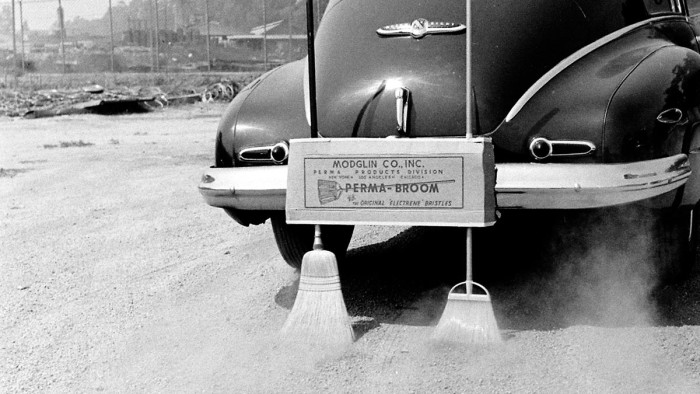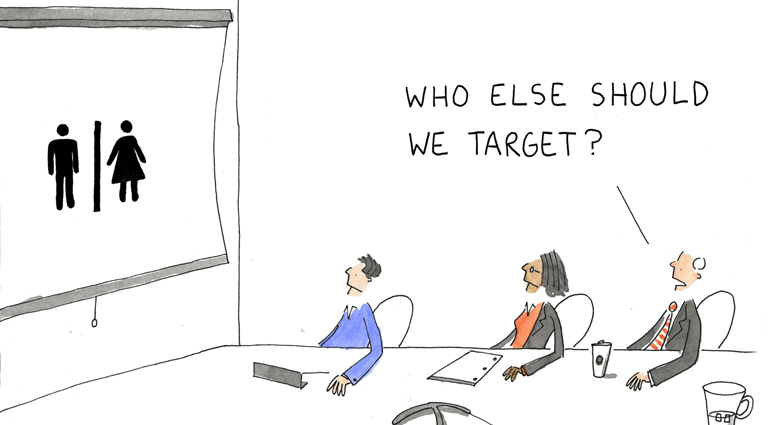While there is a great deal of appreciation for the power of metrics/data, I've come to realize that Sr. Leaders don't quite appreciate the deep, and often corrosive, consequences of choosing metric x over metric y.
The metric you choose communicates to your organization what's important to you (the POWERFUL person). It communicates to them how their personal success will be measured. That translates directly into what they prioritize when it comes to your digital initiatives.
"Leaders don't appreciate the deep & corrosive consequences of choosing metric x over metric y."
Choose the right metric and they'll create the most glorious digital experience in the universe, the perfect acquisition campaign, the most amazing customer service channel. And they will shock you with the profits they deliver.
Choose the wrong one and they'll create self-serving, sub optimal, non-competitive, tear-inducing outcomes that will, slowly over time, bleed the business to death.
Let’s look at one simple example of a metric that is aggressively used in our digital world, Page Views, and its angelic twin, Visitor Loyalty, to illustrate the challenge of creating optimal incentives.
What does Page Views measure? It kinda sorta measures consumption. It is hard to know if a lot of Page Views per visit is a good thing ("The visitor loved our site so much that they read 23 pages of content!") or a bad thing ("Our site is so horrible that it took 23 pages for the visitor to find what they were looking for") or a horrible thing ("After 23 page hunt the visitor gave up, cursed us, abandoned the site, and went on to tweet to 23,000 followers that we stink").
When you look at 23 Page Views, how do you know which of the above three was the outcome?
But it gets worse.
Most content sites are currently monetized using display advertising, most commonly on a Cost Per Thousand Impressions (CPM) basis. When you are paid on a CPM basis the incentive is to figure out how to show the most possible ads on every page ("mo ads mo impressions!") and…. ensure the visitor sees the most possible pages on the site ("mo ads mo impressions mo page views mo money!").
That incentive removes a focus from the important entity, your customer, and places it on the secondary entity, your advertiser.
It does not take a degree in rocket science to see what happens next. The web is littered with examples of this awfulness.
Here's one simple example.
Photo slideshows are a great way to engage and delight customers. Yahoo! News has them. Except that they neither engage nor delight. The way a Page View-driven CPM-incentivized model manifests itself is that every time you click on the Next Photo button they load a new page. The new page has the next photo and lots of new ad impressions. Even on a pretty fast connection that means waiting, often for seconds. Every photo should deliver delight. Instead, every time you click on the Next Photo button, all you remember is the pain of waiting.
Would it cause you to think positively of Yahoo! News? Or Business Insider? Or Forbes? Or all these other sites that impose a Page View-driven CPM-incentivized experience on you? More importantly: Would such a poor experience cause you to go back to these sites?
In that single session Yahoo! News made some of its Page Views quota and some of its CPM earnings. But it failed from a macro perspective. Short term gain; long term loss.
Now consider photo slideshows on (my beloved) news site, the BBC.
Just like Yahoo! News, the BBC site uses display advertising to monetize its content (outside the UK, at least). But when you click Next Photo on the BBC’s slide show, there is no page reload. In fact, all the content gets loaded (most likely asynchronous) when the first photo shows up on your screen. This means when you click Next Photo, the content loads blazingly fast. It also means the BBC photo slideshows can use a beautiful fade transition that makes for a lovely presentation.
The BBC photo slideshows don't deliver small doses of pain every time you click the next button. Instead, they deliver small moments of joy.
In that single session the BBC created fewer Page Views for itself, smaller CPM earnings. But it created joy and delight from a wonderful user experience. That directly translates to me using the words "my beloved" every single time I talk about the BBC website, visiting the site a lot more often (5x a day at least), consuming a lot more content, and in the long run actually seeing (and clicking on) a lot more ads.
Short term loss; long term gain.
The metric the BBC is focused on is not Page Views, it is Visitor Loyalty.
Visitor Loyalty is not in every single report in your Digital Analytics tool. But it is there. It is a standard metric. And it measures not what happens inside a session (short-term incentive), but rather behavior across sessions (long-term incentive). It forces the designers, editors, merchandisers, IT team, and everyone in between to trade tawdry sensational stories delivered via slow-loading, pain-inducing pages, for a focus on customer (not advertiser) delight.
Ironically, that actually means more ad impressions in the long run. It means becoming big.
Take a look around you. Most content sites, be they thesun.co.uk, xinhuanet.cn or nydailynews.com, have home pages that are (and I'm being kind here) link pukes. On average these sites have 500 links on their home page. Why?
If the web analytics dashboard prominently measured Visitor Loyalty, would they still create link pukes?
Would they not think: "Even my mom hates our site, how can I earn her love, the thing that has eluded me all my life?" Would they then not focus on relevance and not generic link puking? Would they not buy simple behavior targeting solutions to use past behavior to customize some of the experience to deliver delight?
All from anointing the right metric, Visitor Loyalty, as your KPI. It forces a focus on the long term and on the right entity (the customer and not the advertiser).
Friends don't let friends measure Page Views. Ever.
There are other examples as well. When you focus on Revenue, rather than its angelic twin Economic Value, you are incentivizing an obsession with converting everyone on the first visit (rarely works!). It is better to focus on measuring Task Completion Rate (directly reported by your customers, hurray!) rather than using a lame metric like Time on Site. When you chase Likes or Followers in social media you are incentivizing improving an immaterial number, you can change that by focusing on Conversation Rate. For your sexy new mobile application obsess about 30 Day Actives (retention rate!) rather than the Number of Installs (what good are installs in a world where on average an app is opened just once in its life?).
"Friends don't let friends measure page views. Ever."
Let me close with a quote on incentives, from the inimitable Steve Jobs…
"Incentive structures work. So you have to be very careful of what you incent people to do, because various incentive structures create all sorts of consequences that you can't anticipate. Everybody at Pixar is incented to build the company: whether they're working on the film; whether they're working on a potential direct-to-video product; whether they're working on a CD-ROM. Whatever their combination of creative and technical talent may be, we want them incented to make the whole company successful."
You hold a lot of power to change your company, choose wisely.
Image Courtesy of livemarketing.com





.png)




What Did You Think?